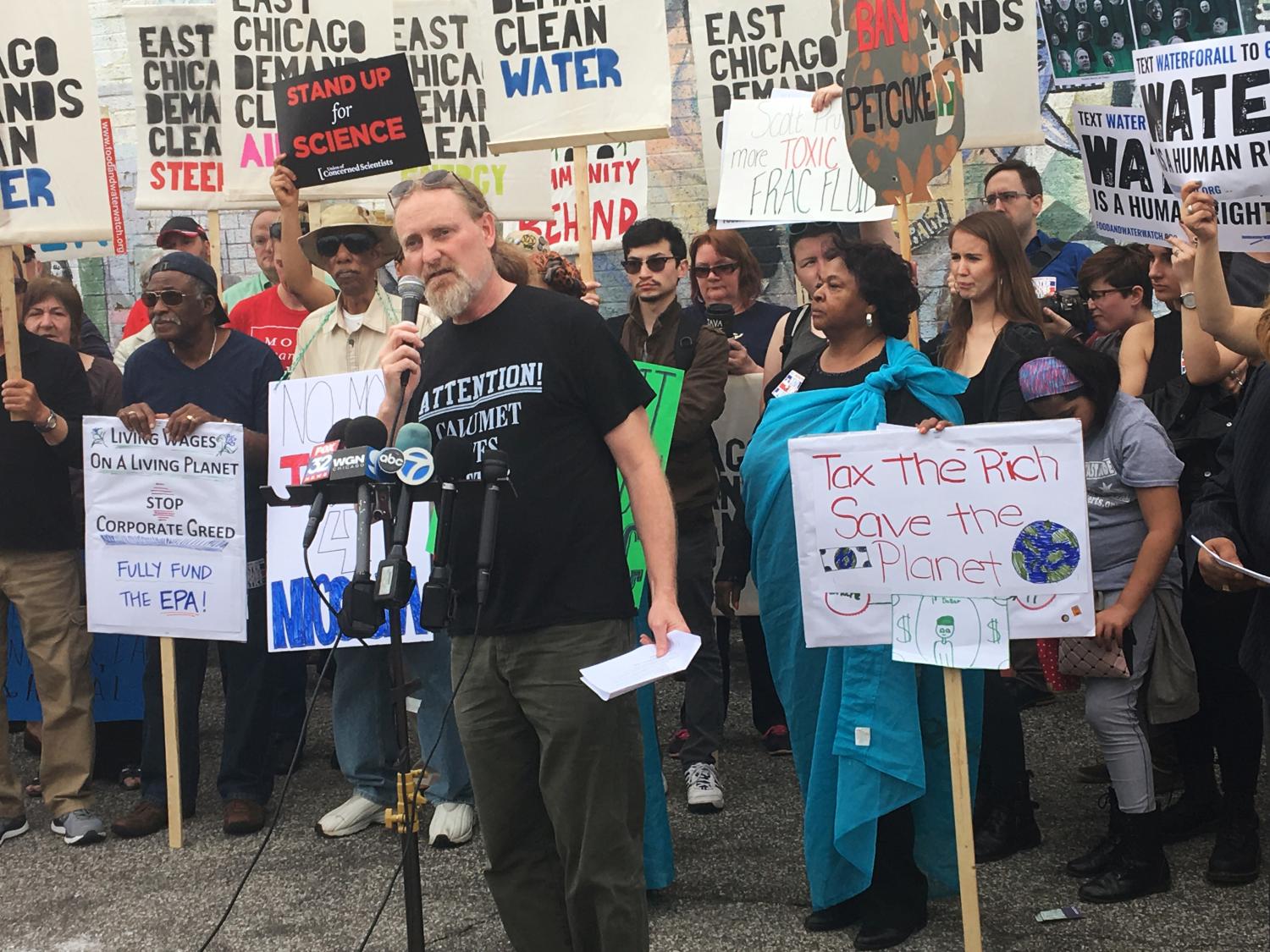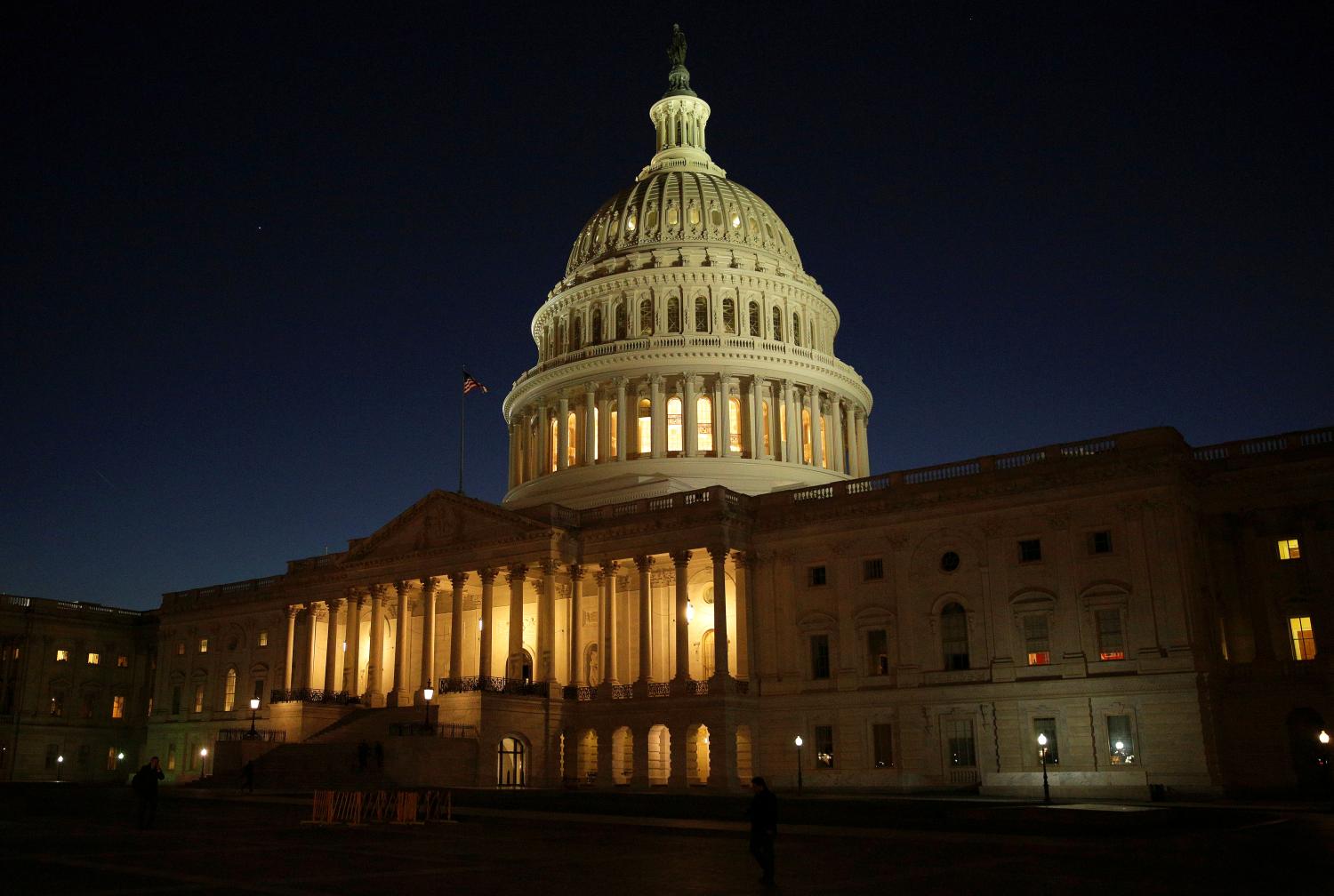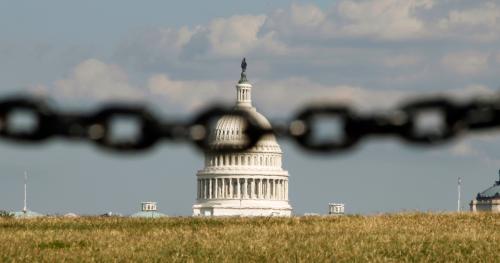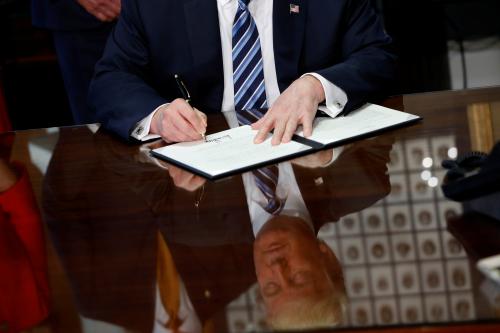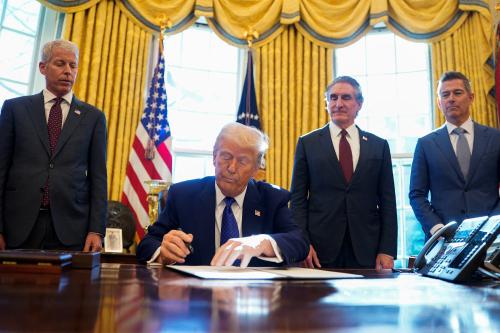This report is part of the Series on Regulatory Process and Perspective and was produced by the Brookings Center on Regulation and Markets.
From presidential tweets to online grocery shopping, the Internet has revolutionized many aspects of modern life, including the way that the public engages with the federal government’s rulemaking process. Not long ago, an individual wanting to submit a comment on an agency proposed rule would have to track down a paper copy of the Federal Register and mail a letter. Today, the public can comment on draft regulations in one click on www.regulations.gov, the web clearinghouse for agency rulemakings. This technological innovation means that agencies now routinely receive thousands – and sometimes even millions – of comments on draft rules. It also has given new life to lobbying in the form of public comment campaigns, or groups of identical public comments that are akin to form letters and are drafted by interest groups.1 For instance, when the Obama-era Environmental Protection Agency (EPA) issued the controversial Waters of the United States (WOTUS) proposed rule in 2014 it received more than one million public comments, of which approximately 90% were identical comments organized via campaigns.
Lobbying in the form of public comment campaigns is often dismissed as “notice and spam,” suggesting that since individual commenters invest little time in drafting these comments, agencies have scant reason to take them seriously. Yet, not much is known about these campaigns—how frequent they are, which groups sponsor them, and whether they have any substantive effect on public policy.
In order to investigate the issue systematically, I collected data on the number, size, and content of public comment campaigns targeting the EPA on proposed rules issued from 2007—2014,2 following the agency’s own definition, which includes all instances in which identical comments were submitted by multiple parties.3 This exercise indicated that public comment campaigns are routine, at least for environmental rulemaking;4 of the 359 EPA proposed rules in my dataset, 57 (16%) were subject to at least one public comment campaign. Further, 33 of the proposed rules (9%) were subject to three or more campaigns.
Because the EPA is an agency tasked with arbitrating between two often-conflicting interests, the environment and industry, I also considered how these perspectives were represented in comment campaigns. For each campaign where the sponsoring organization was identifiable,5 I coded whether the sponsor was an industry group (e.g., a corporation, trade association, union, or profit-oriented entity), an advocacy group (i.e., an organization centered on advancing the public interest or advocating for a specific cause), or some other type of group. Here’s what I found.
Campaigns are a Tool of Advocacy Groups
When it comes to traditional forms of lobbying the EPA, such as in-person meetings, industry voices are often presumed to dominate those representing the public or environmental interests. That notion is supported by the data on the number of lobbying contacts initiated by different groups, which show that industry interests lobby the EPA far more frequently than advocacy groups. My data on public comment campaigns reverse that pattern, though. The figure below, which charts the number and size of public comment campaigns on EPA proposed rules, illustrates that advocacy groups far outstrip industry in their public comment campaign activity. In the dataset, advocacy groups sponsored three and a half times as many comment campaigns and, on average, their campaigns had more than twice as many submissions as those sponsored by industry (14,083 comments compared to 6,556 comments).
EPA Public Comment Campaigns by Group Sponsor
 Note: The y-axis is exponentially scaled in order to highlight the disproportionate nature of campaign activity by the two sponsor types.
Note: The y-axis is exponentially scaled in order to highlight the disproportionate nature of campaign activity by the two sponsor types.
Table 1 shows the top advocacy groups and the average size of their campaigns. Many of these, such as the Sierra Club and the National Wildlife Federation, are well known environmental advocacy organizations with several million members. The campaigns these entities sponsored were frequent and large, spanning multiple rulemaking and including many thousand individual comments. For instance, the Natural Resources Defense Council sponsored a campaign with 254,008 comments in support of Obama’s Clean Power Plan and also a campaign with 108,076 comments endorsing Obama’s WOTUS rule.
Industry-sponsored campaigns followed a different pattern, however. As shown in Table 2, these campaigns tended to be much smaller and were much less likely to identify the sponsoring entity, instead often merely stating commenters’ position (e.g., “I am a poultry producer”). While the table shows a heavy presence of farming interests, this reflects the fact that there were fewer “repeat players” when it came to industry campaigns rather than a concerted strategy by that sector. A variety of industry interests (and sometimes individual corporations) organized campaigns, but they tended to mobilize in response to one or perhaps two specific proposed rules that affected their interests, rather than repeatedly organizing campaigns in response to the EPA’s regulatory actions.
Given the imbalance in campaign activity between advocacy groups and industry, individual proposed rules often received multiple campaigns from advocacy groups and no campaigns from industry. However, the converse does not hold; of the 57 proposed rules that were subject to a comment campaign, only five had campaigns from industry with no corresponding campaign from advocacy groups.
Campaigns Overwhelmingly Support Environmental Regulation
What kinds of messages do public comment campaigns send? More often than not—in 57% of the campaigns analyzed—campaigns offered support for the agency’s position, requesting that the agency quickly finalize the rule as proposed. However, slightly less than a third of campaigns (30%) requested that the agency enact stricter environmental standards than those that were proposed, and a small number asked the agency to weaken the level of regulation that had been proposed (6% of campaigns) or to abandon the rulemaking altogether (8% of campaigns).6
Given the different orientations of advocacy groups and industry, the two types of organizations unsurprisingly diverged in their requests to the EPA. The figure below shows the types of requests advocacy groups and industry made when they organized a campaign. Among advocacy groups, the majority of campaigns simply offered support for the proposed rule, encouraging the EPA to finalize the rule as it was proposed. These campaigns often thanked the agency for taking action and included statements like “I am in full support of the newly proposed emissions standards.” A smaller subset of advocacy group campaigns (27%) asked the agency to strengthen the environmental standards over what had been offered in the proposed rule. In contrast, and more surprisingly, industry groups were no more likely to ask the agency to withdraw the proposed rule than to strengthen it.
Public Comment Campaign Requests, by Sponsoring Group Type
 This difference in request patterns again suggests that advocacy groups and industry pursue different strategies with respect to comment campaigns. This pattern is reinforced when it comes to specific claims included in campaign statements. Compared to advocacy groups, campaigns sponsored by industry were much more likely to make a specific policy request (e.g., asking for a specific standard or a specific change to a rule); whereas 45% of industry campaigns referenced a specific aspect of the policy in the proposed rule, only 25% of advocacy campaigns made similar appeals.7 Instead, advocacy group campaigns were much more likely to include broad values-based statements, such as “I value clean air” or “please continue to defend public health and protect our communities.”
This difference in request patterns again suggests that advocacy groups and industry pursue different strategies with respect to comment campaigns. This pattern is reinforced when it comes to specific claims included in campaign statements. Compared to advocacy groups, campaigns sponsored by industry were much more likely to make a specific policy request (e.g., asking for a specific standard or a specific change to a rule); whereas 45% of industry campaigns referenced a specific aspect of the policy in the proposed rule, only 25% of advocacy campaigns made similar appeals.7 Instead, advocacy group campaigns were much more likely to include broad values-based statements, such as “I value clean air” or “please continue to defend public health and protect our communities.”
Do Campaigns Make a Difference?
Of course, what we’d most like to know about public comment campaigns is whether they actually influence the EPA when it goes to issue a final rule. Are agency bureaucrats persuaded by large comment campaigns? Unfortunately, discerning influence from any kind of lobbying is a notoriously elusive exercise because of the difficulty in knowing the counterfactual scenario, and public comment campaigns are no different. In short, the data cannot tell us whether or how public comment campaigns affect policy outcomes. Still, there are at least three other ways that public comment campaigns can have an impact.
First, comment campaigns expand the scope of the conflict. Many rulemakings proceed to the final rule stage with very little public input, but public comment campaigns engage hundreds, sometimes thousands, of individuals in the rulemaking process. Involving these individuals draws greater public scrutiny to a proposed rule and may be a relatively low-cost way for groups to demonstrate the political salience of a regulatory action. Once this salience is established, lawmakers and the media may pay greater attention to both the rule and the group sponsoring the campaign. Since advocacy groups are generally at a comparative disadvantage to industry groups when it comes to financial resources, comment campaigns may therefore be a way for these groups to level the lobbying playing field.
Second, campaigns may give leaders the cover they need to pursue policies that face political opposition. For instance, during a Republican-led House committee on a 2011 clean air rule, an EPA official testified that “There is tremendous public support for moving forward with these rules…we have received over 800,000 comments from across the country in support of [the proposed rule].” Approximately two-thirds of those comments were in the form of public comment campaigns. Similarly, when President Trump signed an executive order initiating the repeal of the Obama-era WOTUS rule, he pointed to the rule’s strong opposition from farmers, ranchers, and agricultural workers. This reference was perhaps a nod to the 47 comment campaigns (representing more than 27,000 individual commenters) urging the agency to abandon the rule, including a “Ditch the Rule” campaign sponsored by the American Farm Bureau Federation.
Finally, when it comes to campaigns, influencing the final rule may not even be the sponsoring organization’s primary goal.
Finally, when it comes to campaigns, influencing the final rule may not even be the sponsoring organization’s primary goal. In initiating a campaign, membership-based organizations demonstrate to their members that they are actively representing members’ interests in the political sphere and also that they have political clout. This, in turn, may encourage members to make financial contributions to the group or to participate in the group’s maintenance in some other way.
While the ultimate influence of a public comment campaign depends on the particular circumstances, these considerations suggest that comment campaigns may be more than just spam. As Trump’s EPA proceeds with a number of controversial regulatory actions, including the rollback of numerous environmental protections, comment campaigns are likely to continue to play an important role, particularly for advocacy groups.
Table 1: Top Advocacy Group Sponsors of Comment Campaigns, by Number and Size
| Group Name | Total Campaigns | Average Size |
| Sierra Club | 65 | 17,325 |
| CREDO Action | 32 | 8,825 |
| Environment America | 30 | 12,830 |
| National Wildlife Federation | 22 | 13,940 |
| Earthjustice | 22 | 27,422 |
| Natural Resources Defense Council | 20 | 31,746 |
Table 2: Top Industry Sponsors of Comment Campaigns, by Number and Size
| Group Name | Total Campaigns | Average Size |
| Corn farmers | 16 | 1,033 |
| Poultry producers | 12 | 319 |
| Energy and electricity producers | 11 | 32,138 |
| Farm bureaus | 8 | 1,889 |
| Ethanol/ biodiesel producers | 5 | 268 |
| Cattle producers | 4 | 319 |
The author did not receive financial support from any firm or person for this article or from any firm or person with a financial or political interest in this article. She is currently not an officer, director, or board member of any organization with an interest in this article.
-
Footnotes
- Of course, public comment campaigns are not new. In the pre-Internet era, interest groups often sponsored postcard campaigns via mail. However, technological advancements have made it much easier for organizations to coordinate campaigns and less costly for citizens to participate in such campaigns.
- Data collection began in 2007 for data integrity reasons.
- I began by identifying the set of proposed rules issued by the EPA during the years in question, according to the Unified Agenda of Regulatory and Deregulatory Actions, a semiannual accounting of agency rulemaking published in the Federal Register. To identify when a proposed rule was subject to a public comment campaign, I relied on www.regulations.gov. Because the EPA sometimes receives millions of comments on a proposed rule, the agency runs a text plagiarism algorithm to identify comments that are substantially similar in content. For those comments that were deemed to be identical (and thus part of an organized campaign), the agency posts one “representative comment” (rather than posting each comment individually), lists the total number of submissions that comment represents, and identifies the comment as part of a “mass comment campaign” in the document title. This latter marker allowed for systematic identification of comment campaigns (ranging from as few as three comments to many thousands of comments), with the added advantage of viewing the campaigns in the same way that EPA officials do.
- The EPA stands out among agencies in that its rulemakings affect broad swaths of the population, making it a natural target for comment campaigns. While other agencies do receive comment campaigns, they are less likely to be singled out with the same frequency and volume.
- Of course, public interest groups and advocacy and industry are not the only groups that sponsor public comment campaigns; among other groups, religious organizations and school children also sponsor campaigns, and there is a subset of campaigns for which it is not clear which type of group sponsored the campaign. However, campaigns by other groups and unknown sponsors tend to have fewer participants and are considerably less frequent than those originating with advocacy or industry groups.
- Numbers do not sum to one hundred due to rounding.
- This difference is statistically significant at the 0.01 level.
The Brookings Institution is committed to quality, independence, and impact.
We are supported by a diverse array of funders. In line with our values and policies, each Brookings publication represents the sole views of its author(s).

